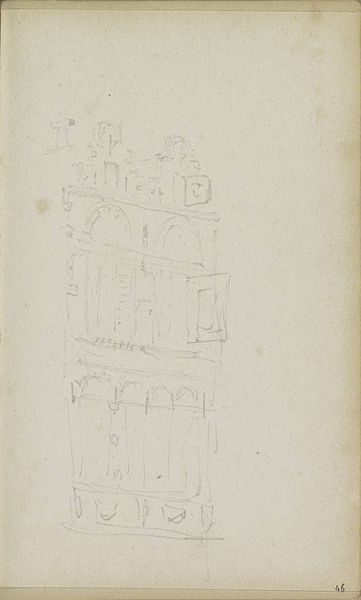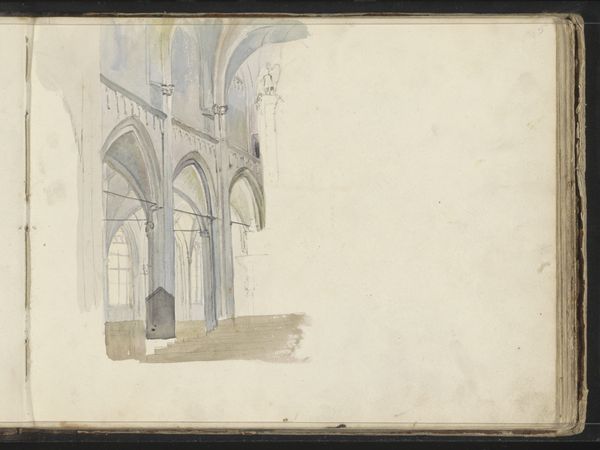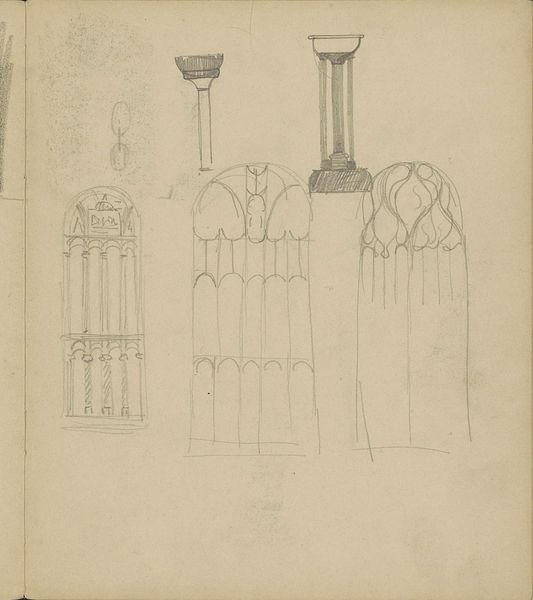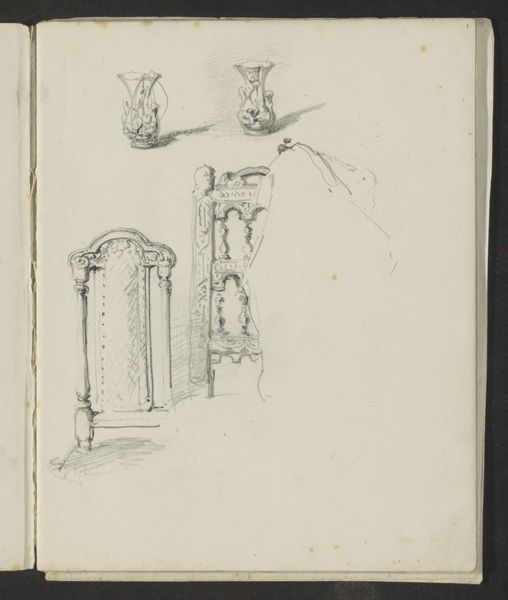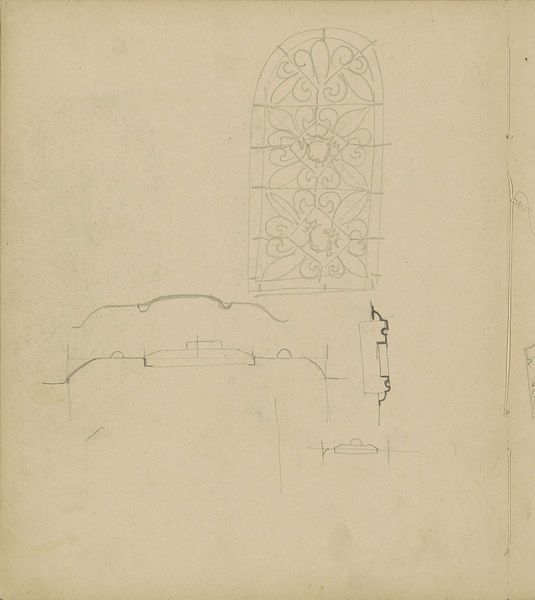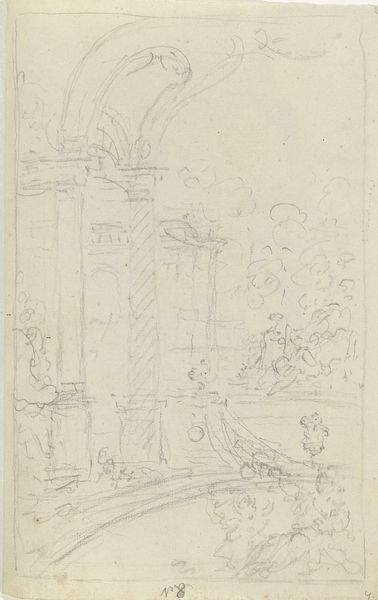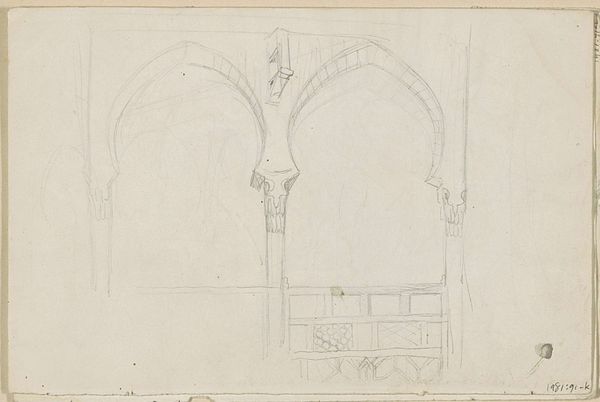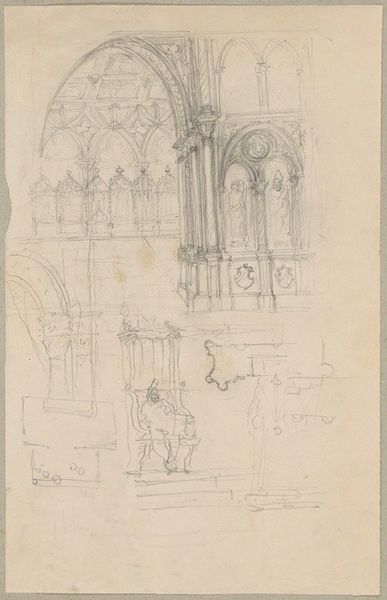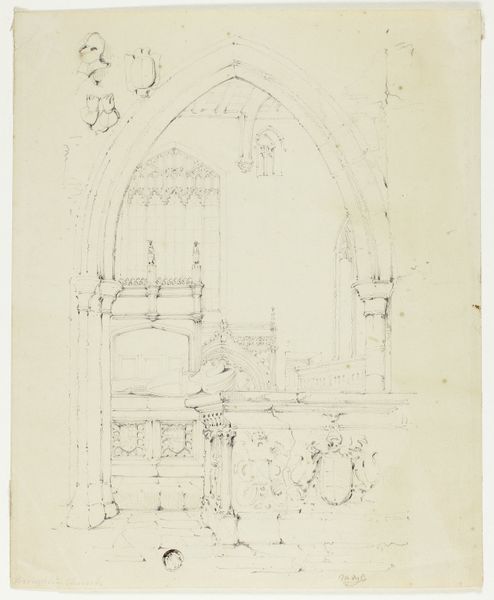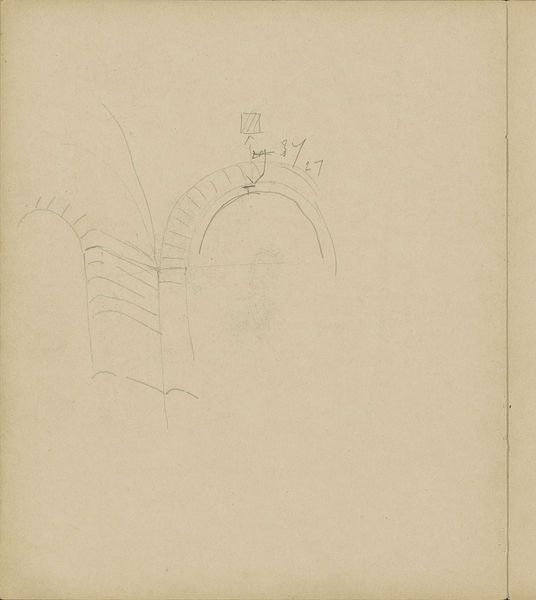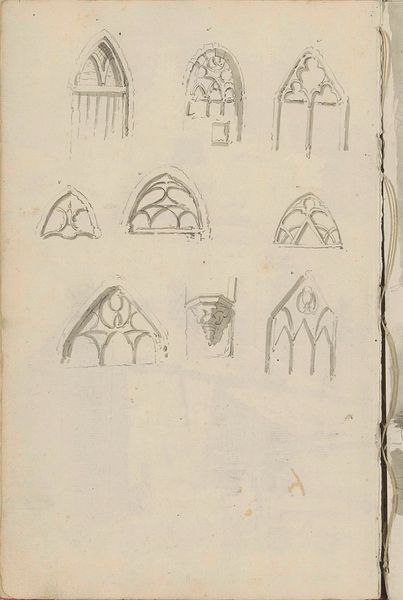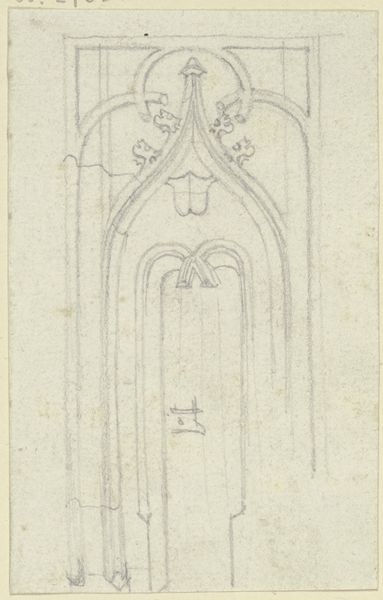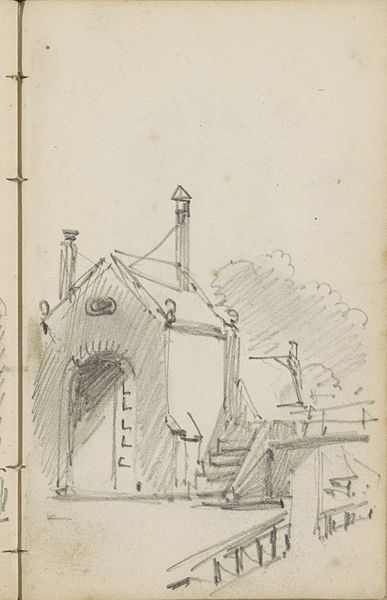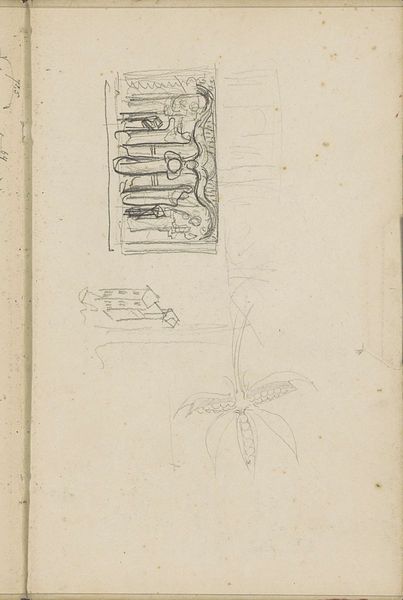
drawing, pencil
#
drawing
#
landscape
#
form
#
pencil
#
line
Copyright: Rijks Museum: Open Domain
Editor: So, here we have "Kerkportaal" – Church Portal – a pencil drawing by Carel Adolph Lion Cachet, from around 1890. It feels unfinished, a fleeting impression. What grabs me is how basic the rendering of the architectural form is. What stands out to you? Curator: Immediately, I consider the material reality. Look at the very process of creation, the quick pencil strokes. This wasn't about producing a refined 'masterpiece', but rather capturing an immediate encounter with form and light. How does this rudimentary representation speak to its social context? What purpose was there to produce a piece like this? Editor: I see what you mean. Maybe it was just a practice sketch? Curator: Exactly! These sketches highlight the often-overlooked labour and thought processes behind the objects. Notice, though, that the landscape isn’t the real subject, but merely formal. The artist's interest lies only in shape and line and how that is put on the page. Can you think of what type of social context could make an artist focus primarily on this specific visual process in making an artwork? Editor: I'm not sure. An art school exercise? It is not the conventional pretty landscape painting that would appeal to middle-class tastes at the time, perhaps, instead produced to learn from rather than consume... Curator: Precisely. This subverts conventional boundaries between craft, labour, and artistic creation, doesn't it? The church may have employed builders and craftspeople, whereas this art renders it purely as a subject for intellectual and skilled production. Editor: I had never considered sketches in relation to those types of boundaries before, between artist and builder. Thank you! Curator: And I appreciate the way your observation encourages new possibilities for reading artistic production.
Comments
No comments
Be the first to comment and join the conversation on the ultimate creative platform.
